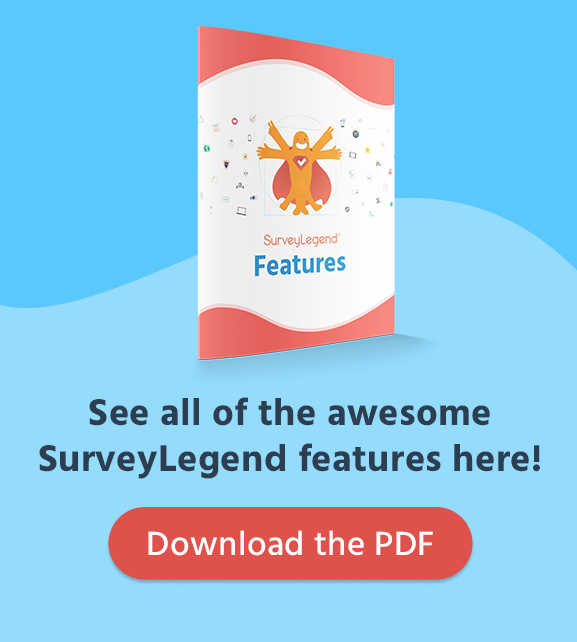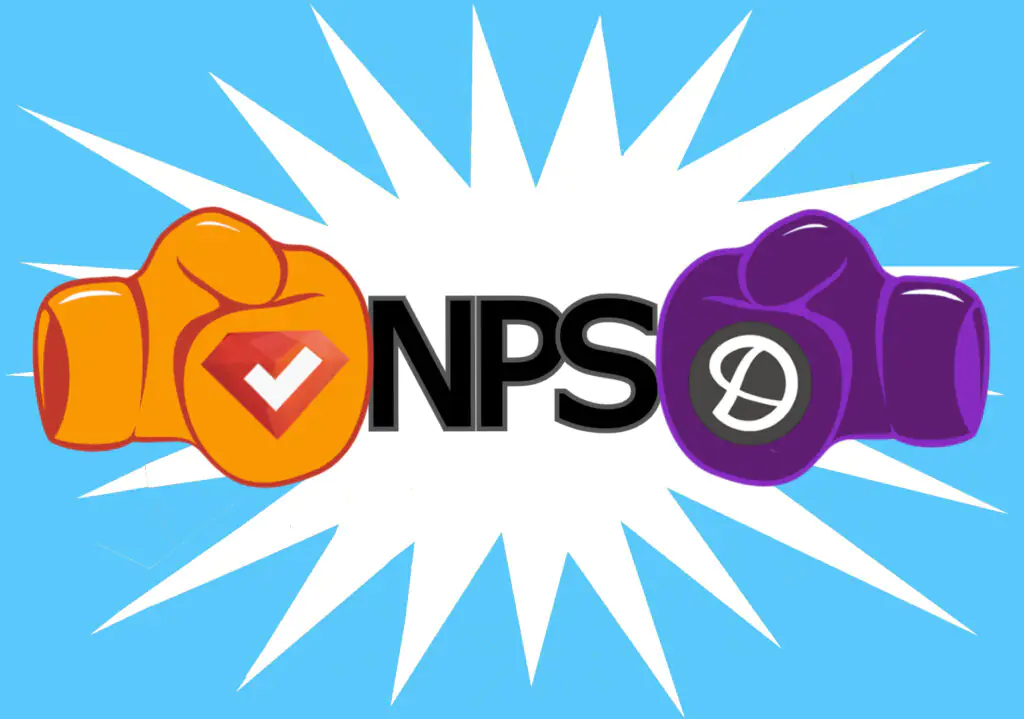We all know how fast a viral image or story can spread. So why not do the same with your surveys? As its name implies, a viral survey is one that spreads quickly across the internet, engaging a large number of participants in a short period of time. In this blog, we’ll look at how to make your survey go viral in ten steps, along with the benefits of doing so – plus a few potential drawbacks to be aware of.
Create Your FREE Viral Survey or Questionnaire Now!
What is a Viral Survey?
Viral surveys are a form of viral marketing that are typically designed to spread quickly over email, social media, or other online platforms (sometimes, of course, a survey may go viral unintentionally). To make them viral sensations, survey designers will often include certain elements that encourage people to share them with friends, followers, and contacts, such as asking about a hot topic or offering a substantial incentive. People continue to share the survey, creating a snowball effect which leads to exponential growth in participation.
Viral surveys, also known as a viral marketing questionnaire, are commonly used for market research, data collection, or simply for fun and entertainment purposes. They can cover a wide range of topics and may include various types of questions, such as multiple-choice, open-ended, or interactive elements.
10 Steps To Creating a Viral Survey
While there is no guarantee a survey will go viral, there are certain elements to consider including to increase its chances of having an impact. Here are some ways to help ensure your survey begins making the rounds via email or on social media and other online platforms.
1. Create Engaging Content
Be sure your survey is interesting and hits on a popular topic or issue. If you have a certain target audience in mind, consider their preferences and interests to make sure it is relevant to them. You’ll also want to use visually appealing designs, colors, and fonts. Including survey images is another big plus; for example, having participants vote on image answers is a great way to engage participants.
2. Make Your Intent Clear
Be sure the survey clearly communicates its purpose. People will naturally want to know why they are being surveyed and how the data will be used. This is especially true if the survey is regarding a sensitive topic. Read our blog on asking sensitive survey questions.
3. Keep it Short and Sweet
People are busy and many have limited attention spans. A survey that takes too long to complete is going to lead to boredom and drop-offs. Of course, someone who finds a survey boring is not going to share it with their contacts, killing the possibility of it going viral. Check out our blog on microsurveys which highlights other advantages of short surveys.
3. Make it Mobile-Friendly
Mobile internet browsing has surpassed desktop internet browsing. Today, nearly 55% of people use their smartphones to go online. So, be sure that your survey is mobile-friendly. A responsive survey that is optimized for mobile is crucial if you want to create a viral quiz or survey.
4. Make it Easy to Share
A survey created for social media is typically easy to share, but if you’re not using social media, make it easy for participants to share it across their social media channels. This includes Facebook, Twitter/X, LinkedIn, Instagram, and so on. Include social media sharing buttons to encourage sharing. Learn more about how to use social media surveys.
5. Offer Incentives
Offering incentives is a great way to encourage participation and sharing (after all, people will want their friends and followers to get the deal, too). Incentives could be in the form of a prize, a discount, exclusive content, or simply the opportunity to be part of something exciting. Check out our blog on the pros and cons of survey incentives.
6. Consider Controversial Topics or Current Trends
You don’t need to be controversial, but you can ask about controversial topics. This can make your survey more shareable as people are more likely to engage with content that is timely and relevant.
7. Include Interactive Elements
Surveys don’t have to be all multiple choice questions. Consider mixing things up with more interactive elements, such as slider questions. Read more about different types of survey questions (surprise – there are 12 types!).
8. Create a Network Effect
Encourage participants to challenge their friends or followers by nominating them to take the survey. This can create a network effect, where each participant brings in more participants.
10. Monitor Tracking and Analytics
Use tracking tools and analytics to monitor the progress of your survey. Identify which channels are most effective for sharing and adjust your strategy accordingly.
Create Your FREE Viral Survey or Questionnaire Now!
Pros and Cons of Viral Surveys
Creating a viral survey or viral marketing questionnaire offers many benefits – as well as some drawbacks. Here are some considerations when designing a survey with an eye on taking it viral.
Viral Survey Benefits
- Large and Diverse Sample Size. Viral surveys have the potential to reach a large and diverse audience quickly. This can result in a more representative sample, providing a broader range of perspectives and insights.
- Cost-Effective. Viral surveys are spread by participants; it costs you nothing outside of the initial survey investment. You just let the survey loose online and hope it catches on!
- Rapid Data Collection. Viral surveys can generate a high volume of responses in a relatively short amount of time. This rapid data collection can be beneficial for time-sensitive projects or when quick insights are needed.
- Brand Exposure. Want to get your name out there? Viral surveys can provide an opportunity for fast and widespread brand exposure, increasing visibility and awareness. If you’re looking to quickly increase your social media presence, viral surveys can also attract more followers.
- Valuable Insights. The diverse pool of participants in a viral survey can lead to a rich and varied set of insights. This can be particularly valuable for market research, product development, or understanding public opinions on various topics.
Drawbacks of Viral Quizzes & Surveys
- Sampling Bias. Viral surveys may attract a specific demographic or audience, leading to sampling bias. The sample may not be representative of the broader population, which can limit the generalizability of the findings. Additionally, if the survey heavily relies on social media platforms, it may exclude individuals who are not active on these platforms, leading to a biased sample. Check out our blog on survey bias for more.
- Lack of Control. Viral surveys rely on participants sharing the survey with their networks. This lack of control over distribution can make it challenging to ensure that the survey reaches diverse and unbiased groups.
- Data Quality. Because viral surveys aim for a large number of responses in a short time, there might be a trade-off in terms of data quality. Participants may rush through the survey, providing less thoughtful or accurate responses. In addition, due to the rapid and widespread nature of these surveys, there may be a risk of misinterpreting results or drawing conclusions too quickly. Careful analysis is necessary to ensure the validity and reliability of findings.
- Privacy Concerns. The widespread sharing of surveys may raise privacy concerns, especially if participants share sensitive information without fully understanding the implications. There may also be ethical concerns if participants are not fully aware of how their data will be used or if there are unintended negative consequences.Clear privacy policies and secure data handling practices are crucial. Be sure you use a survey provider that offers high levels of internet security.
- Brand/Image Risks. Viral surveys could potentially hurt a brand if it is perceived as frivolous, misleading, or controversial. Negative reactions from participants or the public can impact the organization’s reputation. Need some more guidance? We’ve got 25 branding resources for you right here.
Conclusion
Going viral with a survey can be a big win for brands, companies, and researchers. However, It’s important to note that the success of a viral survey depends on various factors, including the content, design, distribution strategy, and the incentive for participants to share. There can also be consequences, such as survey bias and privacy concerns, so it’s important to carefully plan and execute viral surveys with this in mind.
If you’re ready to go viral, SurveyLegend has your back. Our online surveys are highly engaging and mobile-friendly, helping ensure their “viralability.” They’re also some of the most secure surveys on the internet, and can be made completely anonymous should your viral survey be about sensitive topics. Start today with SurveyLegend!
Have you ever been part of a viral survey? What made you share it with someone else? Let us know in the comments!
Create Your FREE Viral Survey or Questionnaire Now!
Frequently Asked Questions (FAQs)
The term “viral” refers to the rapid and widespread dissemination of the survey, similar to how a virus spreads from person to person.
The success of a viral survey depends on various factors, including the content, design, distribution strategy, and the incentive for participants to share.
A viral survey is designed to collect opinions and thoughts, and are usually more serious in nature. A viral quiz is typically more lighthearted, designed to entertain and usually “reveal” something about the quiz taker.




